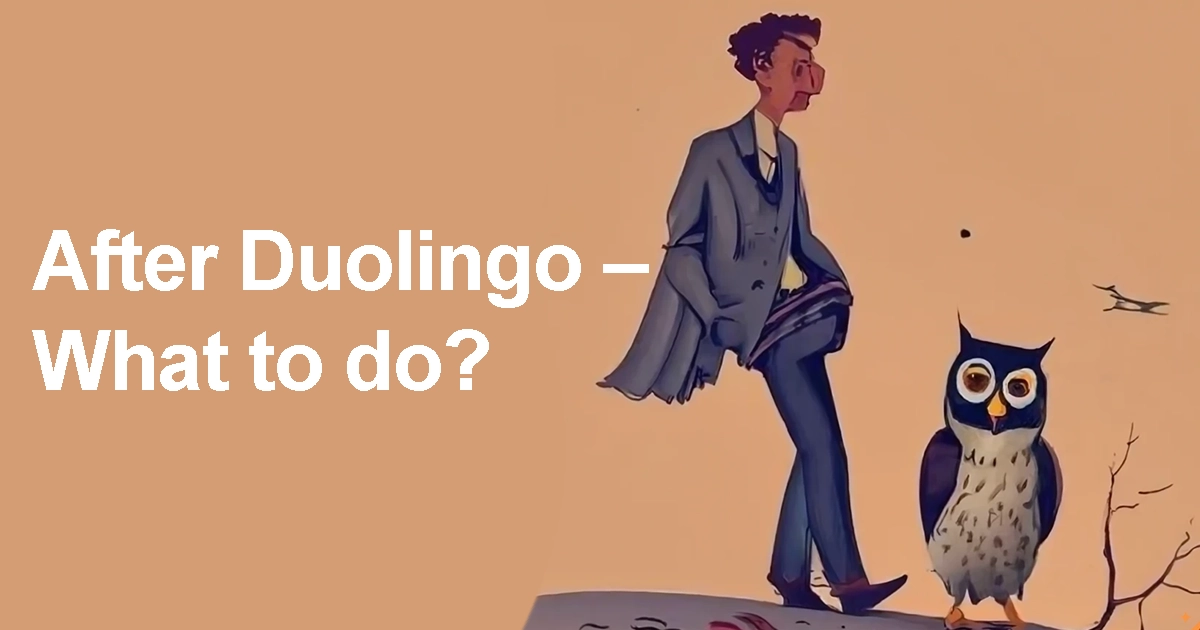After Duolingo – what to do?
Duolingo is a great way to start learning a language, and you can get surprisingly far using it as your sole language learning resource. But sooner or later, you’ll find that you’ve reached a plateau and you need other input. So where do you go next, after Duolingo has played its role?
After Duolingo: authentic content
As we’ve mentioned countless times before, at some point you need to dive into authentic content. After all – that is most likely your end goal, to be able to converse with real speakers of the target language, and to engage with content made by and for native speakers. Many times, however, there’s a gap between the level where Duolingo left you and the level needed in order to, say, watch movies or read novels. In the case of Swedish, we’ve created a language learning material that seeks to bridge that gap – stories covering various themes with simulated conversations for you to participate in. The material is provided both in text and in slowly spoken audio. (Check it out if you want to learn Swedish)
Regardless of what language you’re learning, this is the type of material you should be looking for if native content such as news, books or movies is a bit too difficult. Language learning should always be challenging, but when you understand little or nothing of the content, you won’t learn much. You have to find the balance, the sweet spot where you understand sufficiently in order to make sense of the rest. If you regularly need to look up words, that’s fine, as long as you can get the jist of what the content in question is about.
Why content is better than another language course
After Duolingo, it might be tempting to jump into another language course for the same language. And of course – if you have the opportunity to go to the country of your target language, then you really should join a course there (or get a private tutor). But since you now know the basics after Duolingo, independent language learning is more about practicing a skill than accruing new knowledge. The best way to learn a language beyond the basics is exposure to the language – exposure at a manageable level, sure, but exposure nonetheless.
For Spanish, for instance, Unlimited Spanish is a great resource for getting good, repetitive exposure of the language. Whatever the language of your choice is, you need to find content in the language itself – not explanations in English (or whatever your mother tongue is).
Here’s our recipe for using any content to learn a language:
- Listen to the content (or read, or both). It should be a manageable chunk, a couple of minutes or so.
- Write down words and expressions that you are unfamiliar with as you listen/read.
- Learn the words and expressions, for instance using flashcards.
- Listen to the content (or read or both) again and again, until you feel confident in understanding it.
Using this approach will make you familiarized with the language in a much more natural way. Words and sentences will stick so that they pop up when you’re having conversations in the target language. The journey to fluency has thus begun.
Learning Swedish for real
With Swedish4Real, you’ll be learning Swedish effortlessly and naturally by participating in simulated conversations in Swedish.




